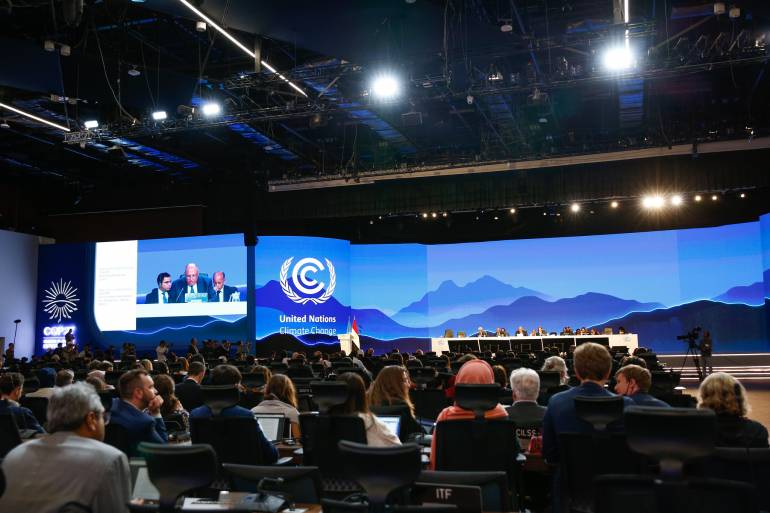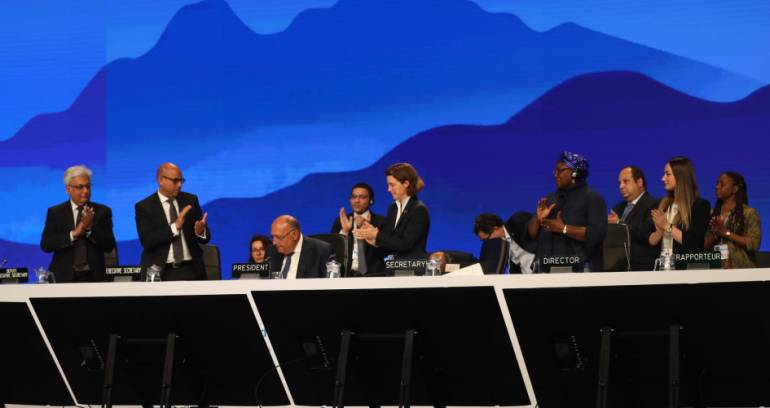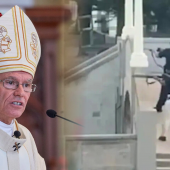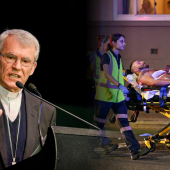UN Climate Conference Agrees on New “Loss and Damage” Fund for Vulnerable Countries

The United Nations Climate Change Conference COP27, which took place in the Egyptian coastal city of Sharm el-Sheikh, concluded with a historic decision to establish and operationalize a “loss and damage” funding for vulnerable countries hit hard by climate disasters, said UN Climate Press Release.
“This outcome moves us forward,” said Simon Stiell, UN Climate Change Executive Secretary. “We have determined a way forward on a decades-long conversation on funding for loss and damage – deliberating over how we address the impacts on communities whose lives and livelihoods have been ruined by the very worst impacts of climate change.”
Welcoming the decision and calling the fund essential, UN Secretary-General António Guterres said that “the world still needs a giant leap on climate ambition.”
“We can and must win this battle for our lives,” he concluded.
Creating a specific fund for loss and damage marked an important point of progress, with the issue added to the official agenda and adopted for the first time at COP27.
Governments took the ground-breaking decision to establish new funding arrangements, as well as a dedicated fund, to assist developing countries in responding to loss and damage.
The Red line
Set against a difficult geopolitical backdrop, the 27th Conference of the Parties to the United Nations Framework Convention on Climate Change (COP27) resulted in countries delivering a package of decisions that reaffirmed their commitment to limit global temperature rise to 1.5 degrees Celsius above pre-industrial levels.
UN Secretary-General stated that “The red line we must not cross is the line that takes our planet over the 1.5-degree temperature limit,” he stressed, urging the world not to relent “in the fight for climate justice and climate ambition.” The UN’s Intergovernmental Panel on Climate Change indicates that greenhouse gas emissions must decline 45% by 2030 to limit global warming to 1.5°C.
The package also strengthened action by countries to cut greenhouse gas emissions and adapt to the inevitable impacts of climate change, as well as boosting the support of finance, technology and capacity building needed by developing countries.

Global Goal on Adaptation
COP27 President Sameh Shoukry announced the Sharm el-Sheikh Adaptation Agenda, enhancing resilience for people living in the most climate-vulnerable communities by 2030.
COP27 saw significant progress on adaptation, with governments agreeing on the way to move forward on the Global Goal on Adaptation, which will conclude at COP28 and inform the first Global Stocktake, improving resilience amongst the most vulnerable.
Governments also agreed to establish a ‘transitional committee’ to make recommendations on how to operationalize both the new funding arrangements and the fund at COP28 next year.
COP27 President Sameh Shoukry said: “The work that we’ve managed to do here in the past two weeks, and the results we have together achieved, are a testament to our collective will, as a community of nations, to voice a clear message that rings loudly today, here in this room and around the world: that multilateral diplomacy still works…. despite the difficulties and challenges of our times, the divergence of views, level of ambition or apprehension, we remain committed to the fight against climate change…. we rose to the occasion, upheld our responsibilities and undertook the important decisive political decisions that millions around the world expect from us.”
Speaking about the year ahead, Stiell said UN Climate Change will help Parties and future COP Presidencies to navigate this path to the new phase of implementation.
The cover decision, known as the Sharm el-Sheikh Implementation Plan, highlights that a global transformation to a low-carbon economy is expected to require investments of at least USD 4-6 trillion a year. Delivering such funding will require a swift and comprehensive transformation of the financial system and its structures and processes, engaging governments, central banks, commercial banks, institutional investors and other financial actors.
“In this text we have been given reassurances that there is no room for backsliding,” said Stiell. “It gives the key political signals that indicate the phasedown of all fossil fuels is happening.”
Wider collaboration of all Stakeholders
From 6 to 20 November, COP27 held high-level and side events, key negotiations, and press conferences, hosting more than 100 Heads of State and Governments, over 35,000 participants and numerous pavilions showcasing climate action around the world and across different sectors.
COP27 provided a platform for governments, businesses and civil society to collaborate and showcase their real-world climate solutions. The UN Climate Change High-Level Champions held a two-week programme of more than 50 events.
COP27 brought together more than 45,000 participants to share ideas and solutions, and build partnerships and coalitions.
Young people, in particular, were given greater prominence at COP27. Young people made their voices heard through the first-of-its-kind pavilion for children and youth, as well as the first-ever youth-led Climate Forum.
Indigenous peoples, local communities, cities and civil society, including youth and children, showcased how they are addressing climate change and shared how it impacts their lives. - with inputs from UN Climate Press Release
Radio Veritas Asia (RVA), a media platform of the Catholic Church, aims to share Christ. RVA started in 1969 as a continental Catholic radio station to serve Asian countries in their respective local language, thus earning the tag “the Voice of Asian Christianity.” Responding to the emerging context, RVA embraced media platforms to connect with the global Asian audience via its 21 language websites and various social media platforms.












